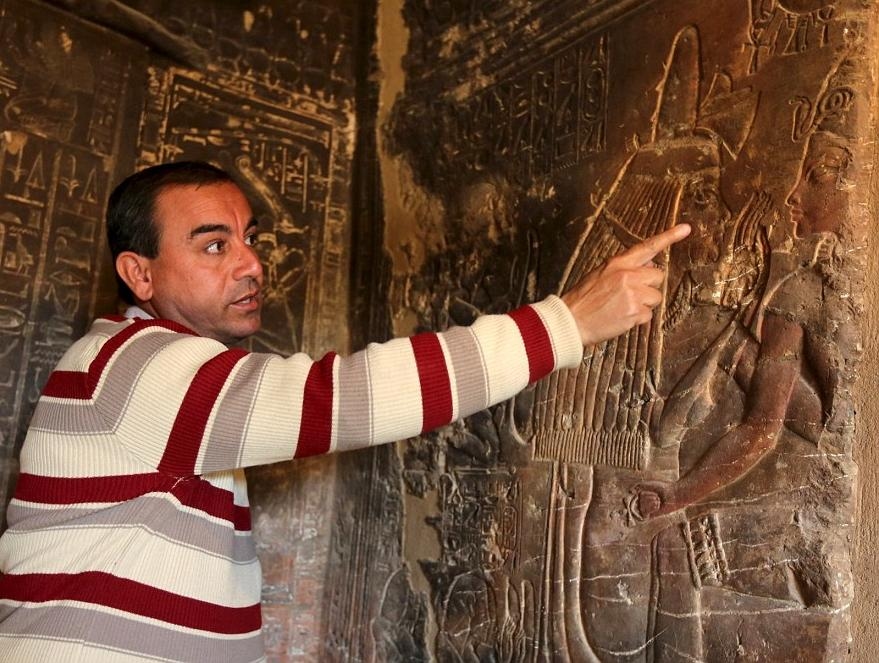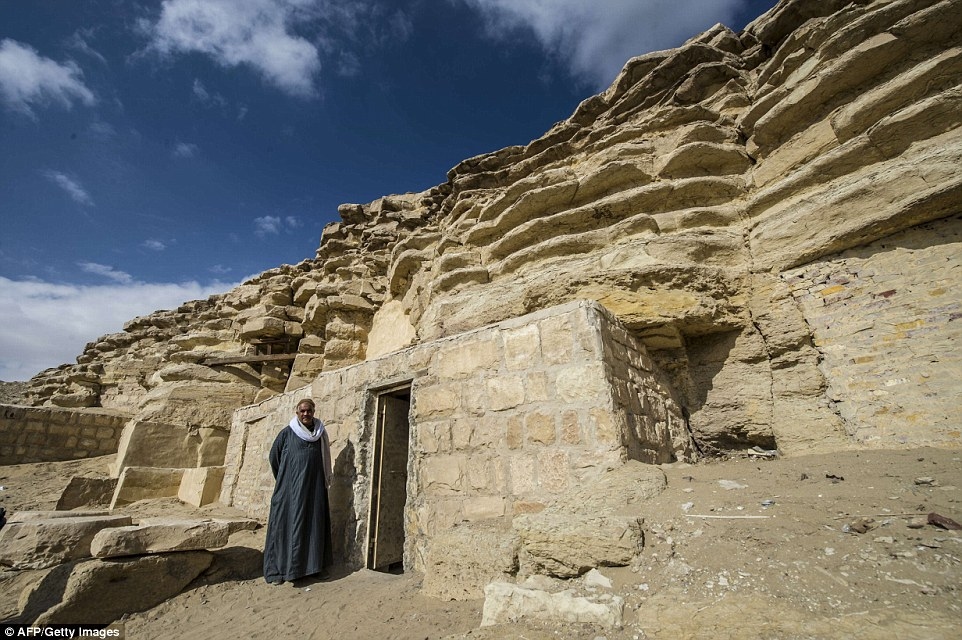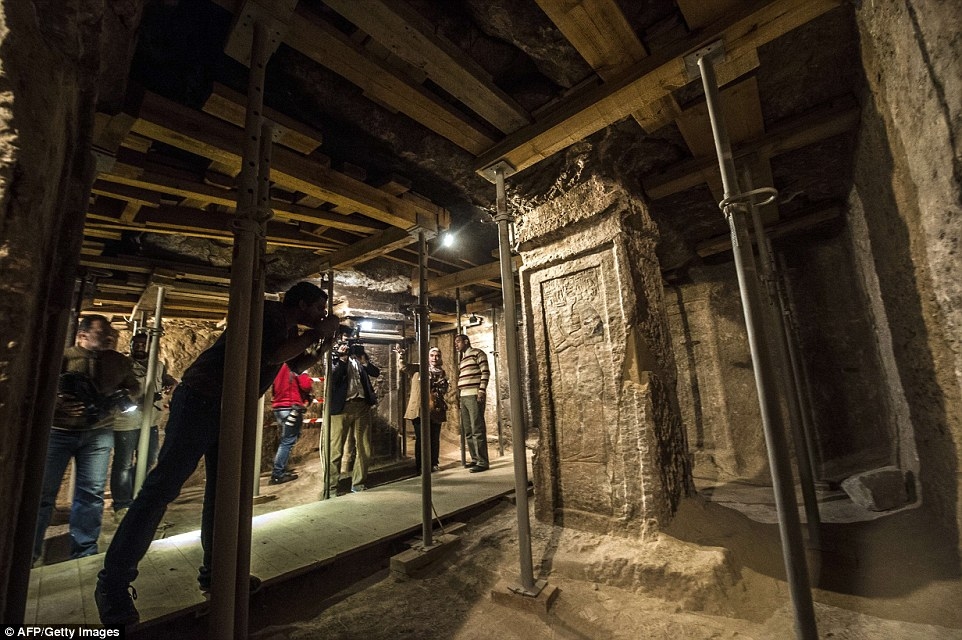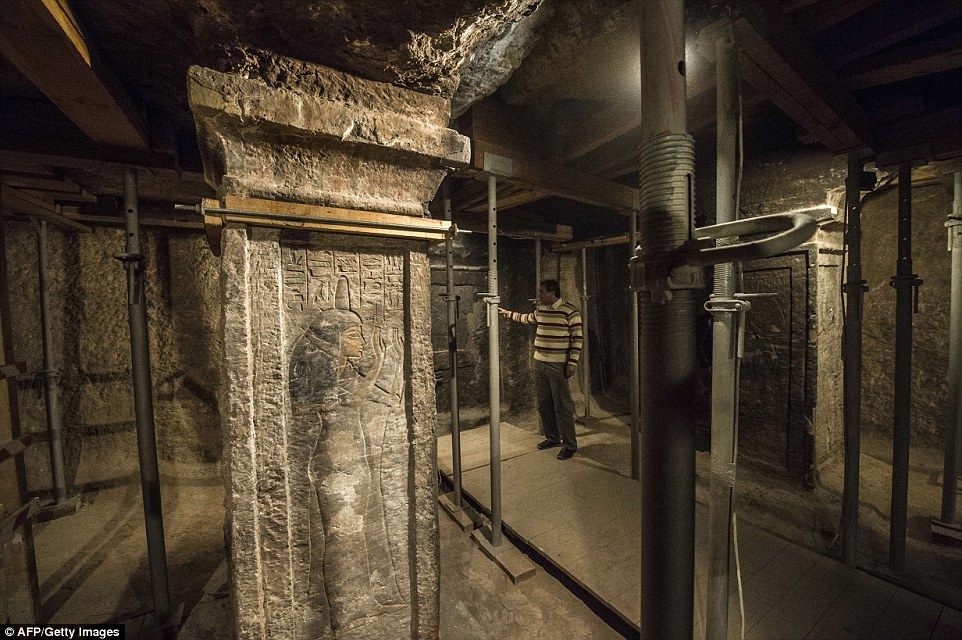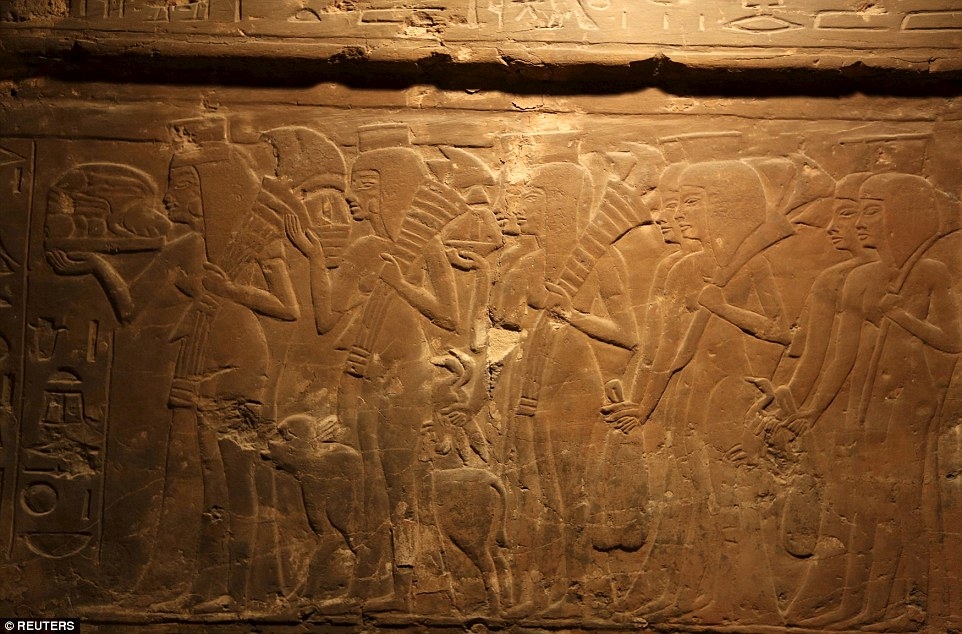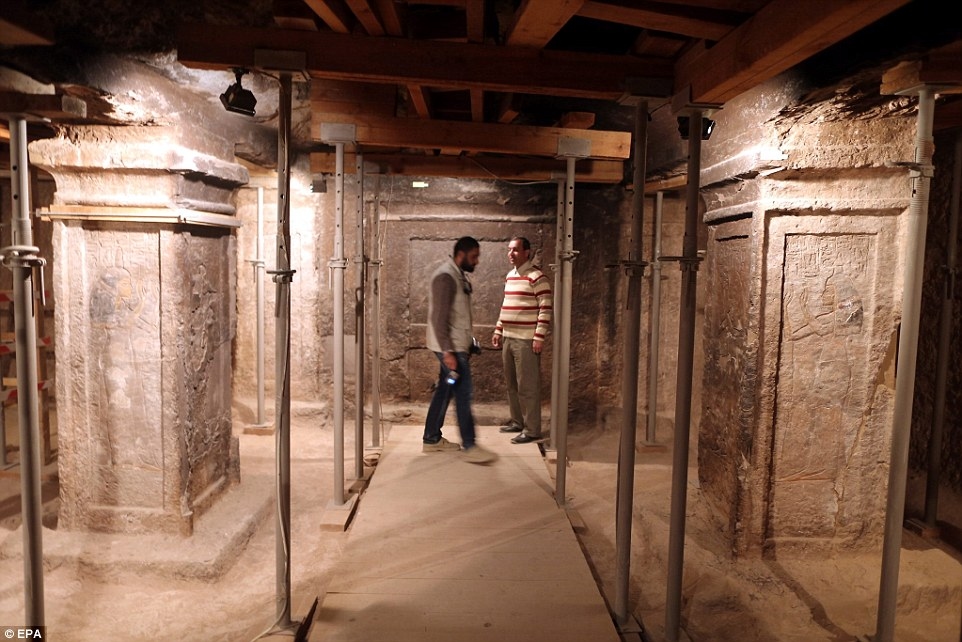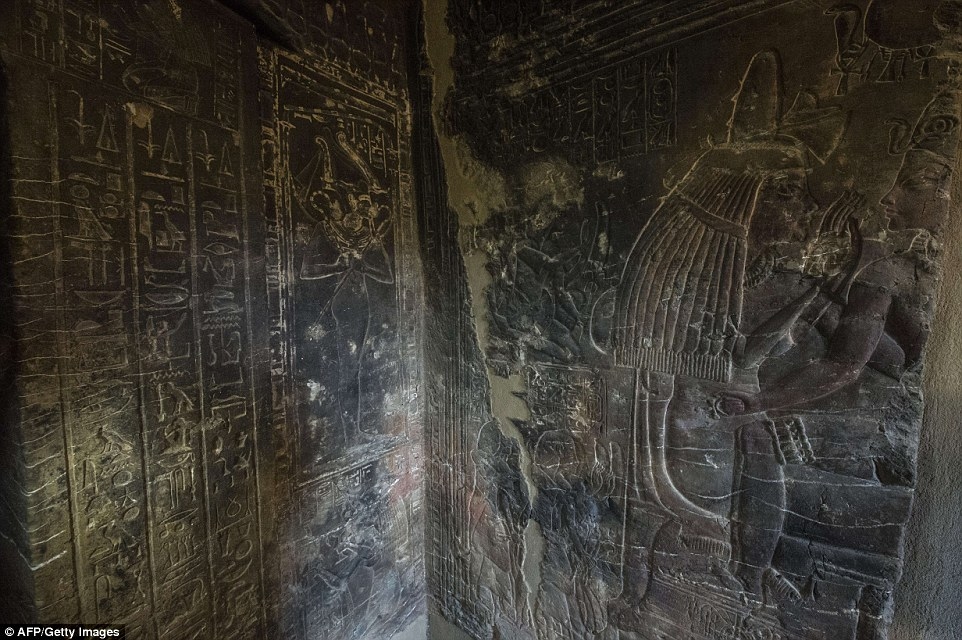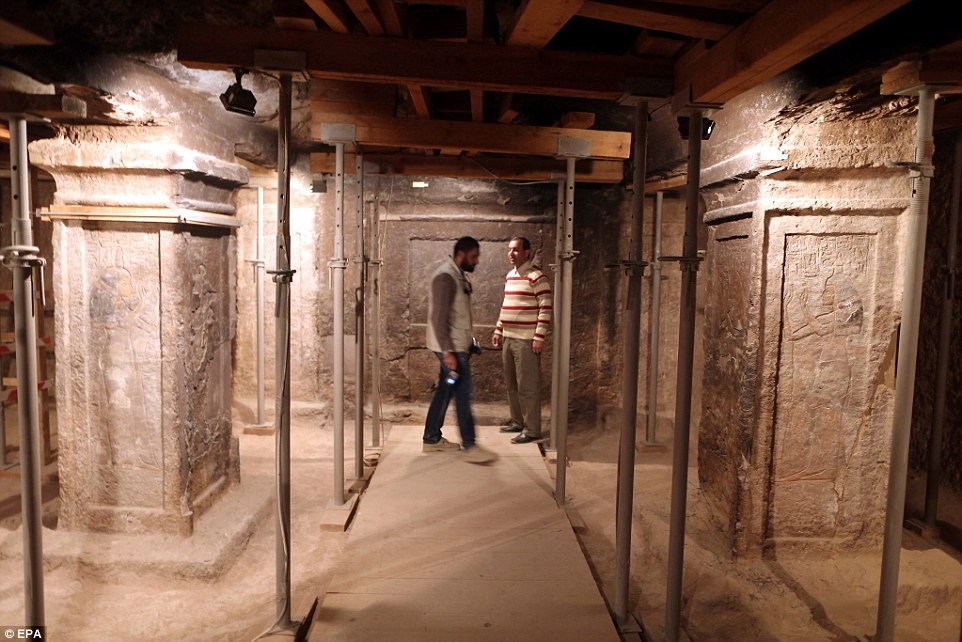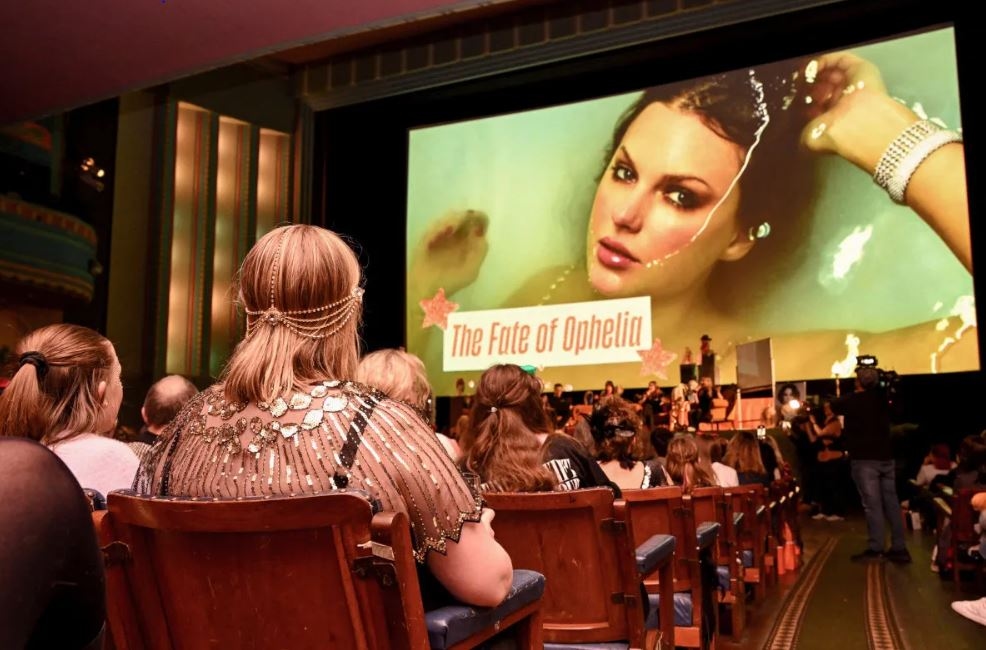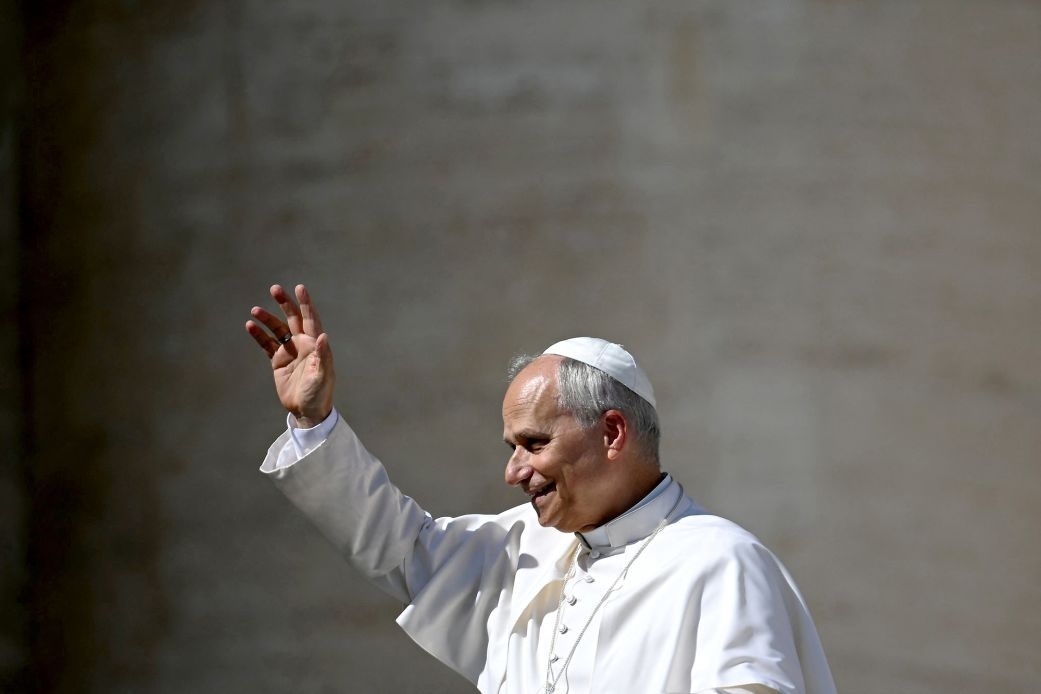Imogen Calderwood
The Daily Mail
The tomb of Tutankhamun's wet nurse has been opened to visitors for the first time, following its discovery almost 20 years ago.
The burial site, which was discovered in 1996, contained the body of the wet nurse Maia surrounded by inscriptions and images painted on the walls.
It comes just weeks after the downing of Russian Metrojet Flight 9268 as it travelled from the Egyptian resort of Sharm el-Sheikh to Saint Petersburg on October 31, killing 224 people on board.
Tourism in the country faced a worrying downward trend following the crash, with holidaymakers choosing to avoid nations threatened by terrorist groups.
Egypt's antiquities minister, Mamdouh el-Damaty, said that these ancient paintings include scenes of Maia nursing the young King Tutankhamun.
The minister described the opening of the tomb as being ‘very important’, because it coincides with recent survey and exploration work carried out in Tutankhamun’s tomb in the Valley of the Kings.
During the opening ceremony he announced that Maia could well have been the boy king’s elder sister Meritaten, because a relief in a different royal tomb shows the princess breast feeding a young child.
‘This child could be King Tutankhamun,’ said Mr el-Damaty. ‘Although a survey on the Maia tomb, which will take place immediately, compared with the results of the survey on the boy king’s tomb, would uncover more of Tutankhamun’s secrets.’
One of the tomb's images shows the young king sitting on Maia’s lap, and the king is mentioned several times in the tomb’s inscriptions.
Except for the information found inside her tomb, very little is known about Maia. Her origins and her parentage continue to be a complete mystery.
French Egyptologist Alain Zivie unearthed the tomb in Saqqara, a necropolis 13 miles south of the capital city of Cairo.
Saqqara is known as the burial site for the courtiers and high-ranking officials of ancient Egypt's New Kingdom, which prevailed over three thousand years ago.
The tomb consists of three chambers. The first is dedicated to Maia’s life; the second is dedicated to her burial rites, with carvings showing Maia in front of offering bearers.
The third room is the largest of the tomb, with four pillars that are decorated with the wet nurse’s image. There is also a staircase leading down from this room into the, mostly undecorated, burial chamber itself.
Most of Egypt's emperors were buried in the Valley of the Kings near Luxor, about 300 miles south of Cairo.
British archaeologist Howard Carter discovered the riches-filled tomb of the boy king Tutankhamun in 1922, sparking a worldwide enthusiasm for Egyptology.



